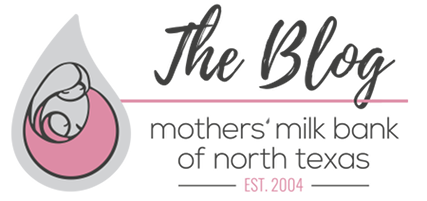 donor milk ready for processing
donor milk ready for processing
Last week, our blog featured a profile of Shaina Starks-Solis, Production Manager at Mothers' Milk Bank of North Texas, who has the critical job of supervising the flow of donor milk coming in and going out. This week, we explore the standards for processing the milk, ensuring quality and safety for premature and critically ill babies in need.
Mothers' Milk Bank of North Texas is a proud member of the Human Milk Banking Association of North America (HMBANA). HMBANA, established in 1985, serves as a governing resource for milk banks all over the United States. Its protocols help establish non-profit milk banks such as MMBNT as well as new milk banks needed in North America. In addition, HMBANA implements strict milk processing guidelines, ensuring every milk bank's primary concern: safety.
 milk is pasteurized for 30 minutes
milk is pasteurized for 30 minutes
HMBANA's goals include:
- Ensuring quality control of donor milk banking among member banks through adherence to mandatory guidelines and periodic inspection of member banks
- Providing a forum for networking among experts in the field on issues relating to donor human milk banking
- Encouraging research into the unique properties of human milk and its uses
- Promoting, protecting and supporting breastfeeding for mothers and infants
 milk samples ready for testing
milk samples ready for testing
Ever wonder what happens to donor milk before it is dispensed to hospitals and fragile babies at home? Milk arrives at the milk bank frozen and remains frozen for processing. It is gradually thawed, pooled, packaged and then pasteurized at 62.5 C for 30 minutes. Milk is cooled, tested for bacteria, labeled and frozen for storage and shipping. HMBANA's mandatory guidelines include:
- scrubbing
- pouring
- mixing & pooling
- filling bottles
- pasteurization using the Holder Pasteurization Method
- lab testing
- freezing, storing and shipping
For more photos and details about HMBANA's processing guidelines, click here.
For more information about Mothers' Milk Bank of North Texas, click here.

